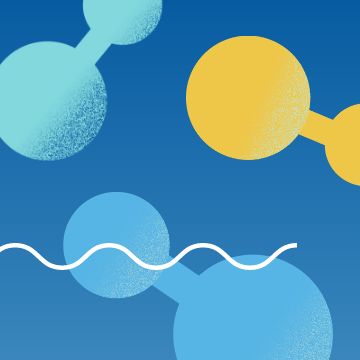Blue bridge
to a green future



In order to meet the climate targets, the energy production of the future needs to be entirely carbon-free. Hydrogen plays an important role in achieving this. However, until sufficient renewable energy is available for producing green hydrogen, blue hydrogen offers a climate-friendly alternative for a transitional period, as the carbon dioxide generated in the process is not released into the atmosphere. KSB pumps and valves are used to capture and store the CO2 produced.
The idea of capturing carbon dioxide during the production of hydrogen from natural gas is particularly attractive where high levels of emissions are generated, for example in the iron and steel industry, fossil-fuelled power plants and the chemical industry. The processes involved in hydrogen production are widely known, and the required plant equipment has been tried and tested. In all classic processes for producing hydrogen from natural gas, pumps and valves are used, such as globe and butterfly valves. They perform a variety of tasks and operate under extreme conditions involving high pressures and temperatures.
Transporting and storing CO2
The key to producing blue hydrogen is the effective capturing and storage of the carbon dioxide generated. After it has been captured, the carbon dioxide is compressed. It can then be transported efficiently and pumped into underground storage facilities. The pumps used must be able to handle a wide range of applications, be quickly ready for use and suitable for huge pressures and high temperatures.
Handling CO2 involves a number of challenges. The first issue is its volatility. Carbon dioxide is gaseous at ambient pressure. Suitable seals prevent leakage and reduce the risk of freezing. Developers at KSB in Frankenthal investigated these influencing factors in detail more than ten years ago in a CO2 test facility. On the basis of this research work, they were able to determine the most efficient pump for the respective operating range and tasks in the hydrogen process.
Temperature and pressure monitoring required
Another challenge when converting gaseous CO2 into its liquid state is keeping the pressure and temperature stable. Keeping these factors under control is of enormous importance, especially in multistage processes. The pumps therefore need to be equipped with sophisticated additional sensors for temperature and pressure monitoring. If the fluid handled is at risk of passing from the liquid to the gaseous state, the motor speed is automatically reduced.
Hydrogen is considered a technology of the future and can already be implemented today by manufacturers combining proven hydrogen production technologies with carbon capture systems. This enables a fast transition to carbon-neutral processes until enough green hydrogen is available.
What does carbon capture and storage mean (CCS)?
Carbon capture and storage (CCS) is the term used to describe the process of capturing and storing carbon dioxide. Carbon dioxide (CO2) emissions need to be reduced. To bring down net emissions in the short term, an effective method is to capture any CO2 that is produced and prevent it from being released into the atmosphere. Although this does not reduce the actual level of emissions, it does eliminate the harmful impact of greenhouse gases.
The process consists of two main steps: Capturing or separating the carbon dioxide and then storing it safely. It makes sense to capture greenhouse gases directly during industrial processes that release particularly large quantities of emissions. This is especially useful and worthwhile where high levels of emissions are generated, for example in iron and steel production, oil and gas refineries and fossil-fuelled power plants. The cement industry also accounts for a considerable amount of global CO2 emissions.







